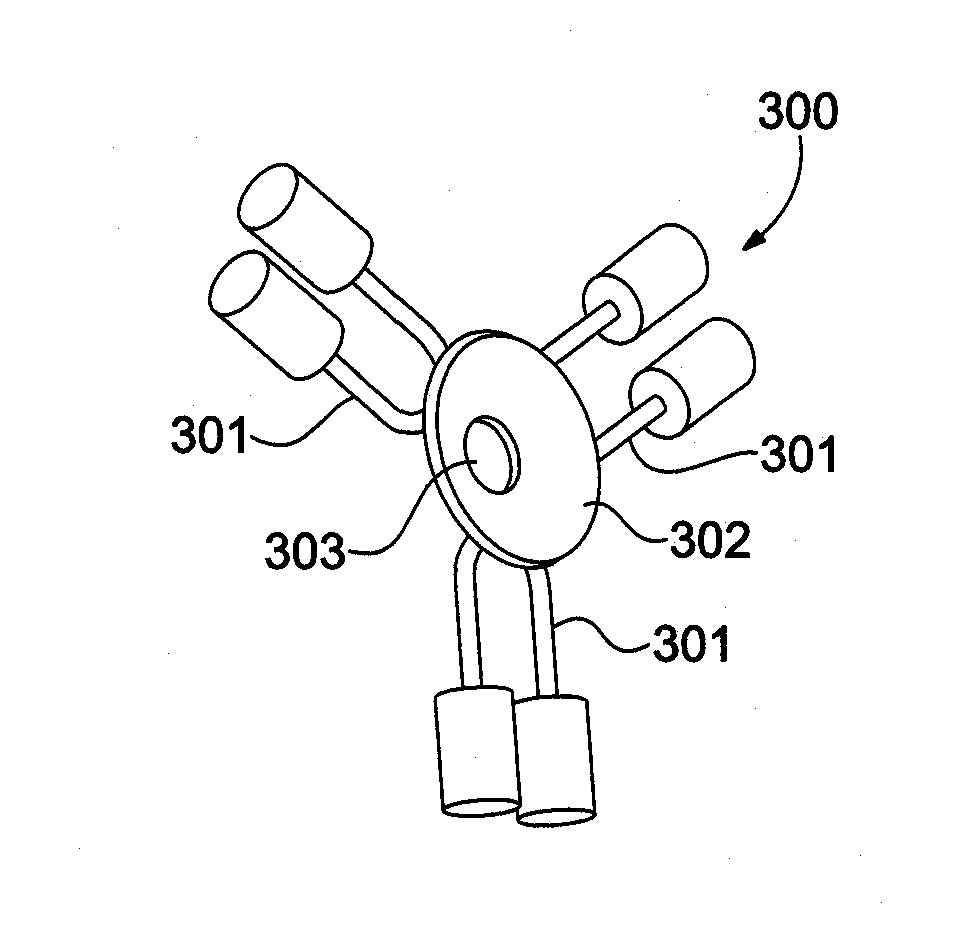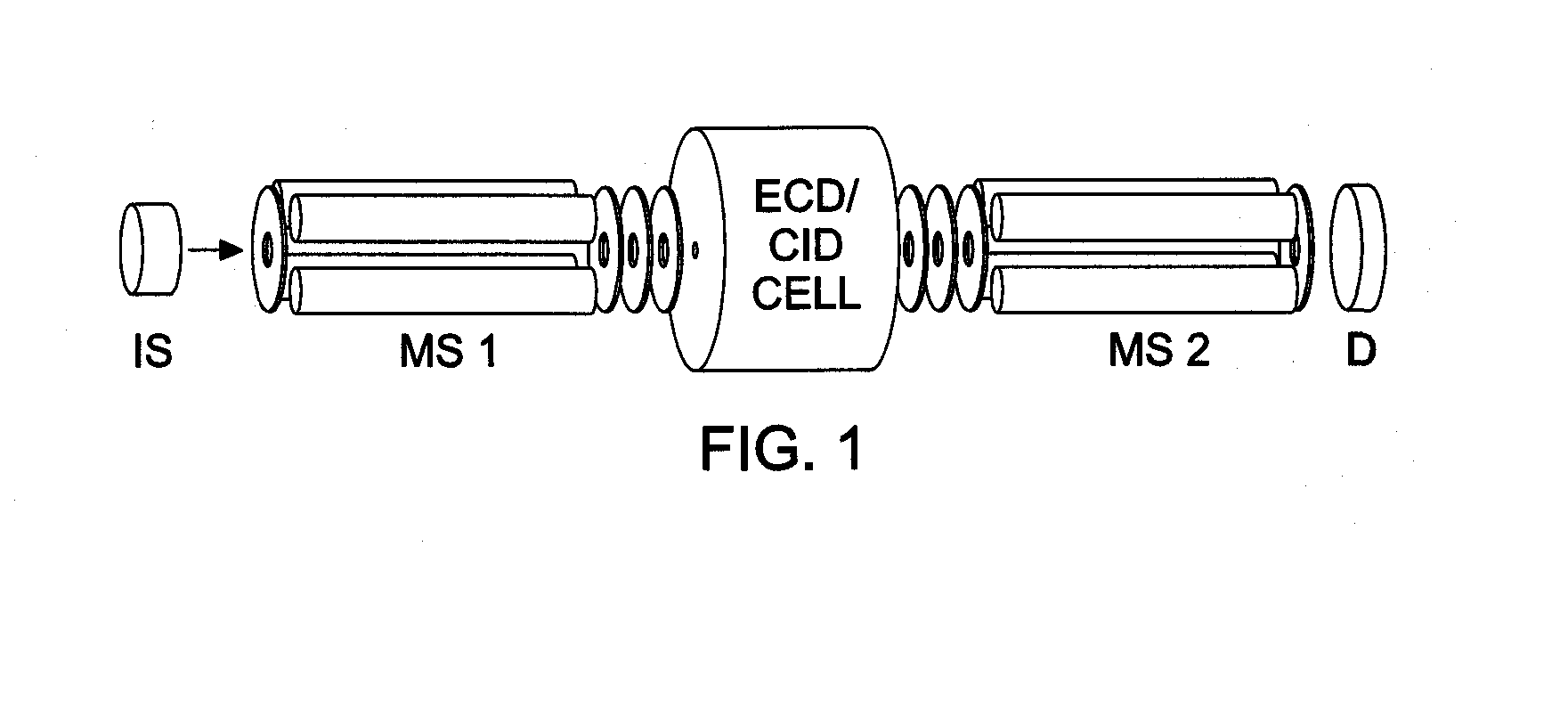Electron source for an rf-free electronmagnetostatic electron-induced dissociation cell and use in a tandem mass spectrometer
a technology of electron-induced dissociation cell and electron source, which is applied in the direction of particle separator tube details, instruments, separation processes, etc., can solve the problems of limiting the informational output of experiments, shackling the design and execution of experiments, and limiting the efficiencies of electron-induced fragmentation processes, so as to increase the reaction efficiency, increase the overlap, and increase the reaction efficiency
- Summary
- Abstract
- Description
- Claims
- Application Information
AI Technical Summary
Benefits of technology
Problems solved by technology
Method used
Image
Examples
experiment 1
[0051]A triple quadrupole (Q-q-Q) Finnigan TSQ 700 mass spectrometer was converted to a Q-ECD-Q instrument (cf. FIG. 1) having a tantalum cone 302a, FIG. 3C, located concentric with the cell's axis at the ion-entrance, which served as the source of electrons. Cones 302a with two different apex angles were manufactured, 45° and 60°. For the 45° cone, the diameter at the base was 5 mm and the diameter of the hole 303a was 3 mm; for the 60° cone, the diameter at the base was 3 mm and the diameter of the hole 303a was 1 mm. Three pairs of tantalum heating wires 301a were attached to the external side of the cone 302a, and the emitter 300a was used as the emitter 225 in the cell 220 of FIG. 2B, and was fixed in a molybdenum holder 224 with an entrance aperture 221 and exit aperture 223 for passage of ions and electrons. The cell 220 comprised an electromagnet 222, which contained copper wire of 1.2 mm diameter spooled on a titanium bobbin of 70 mm outer diameter, 6.0 mm inner diameter, a...
experiment 2
[0054]In a second experiment in accordance with the present invention, the cell 220 of FIG. 2B was used with an electron emitter 225 fabricated in the form of a flat disc 502, FIGS. 5A, 5B, and with the electromagnet 222, because the electromagnet 222 can provide a magnetic field with lines perfectly perpendicular to the surface of disc 502 (Condition 1, requirement for the best guiding electrons from emitter to the axis where ions are). Flat disc emitters 500 can be made two to three times thinner than cone-shaped emitters 300 and, thus, require less power and generate correspondingly less heat radiation. The heating current may be provided through the disc emitter 500.
[0055]Two exemplary forms of emitters in accordance with the present invention were created that retained the advantages of both a loop filament (viz. small bulk / size, low power consumption, tolerance to low vacuum, and low cost) and an indirectly heated dispenser cathode (viz. large emitting area, no voltage drop th...
PUM
 Login to View More
Login to View More Abstract
Description
Claims
Application Information
 Login to View More
Login to View More - R&D
- Intellectual Property
- Life Sciences
- Materials
- Tech Scout
- Unparalleled Data Quality
- Higher Quality Content
- 60% Fewer Hallucinations
Browse by: Latest US Patents, China's latest patents, Technical Efficacy Thesaurus, Application Domain, Technology Topic, Popular Technical Reports.
© 2025 PatSnap. All rights reserved.Legal|Privacy policy|Modern Slavery Act Transparency Statement|Sitemap|About US| Contact US: help@patsnap.com



